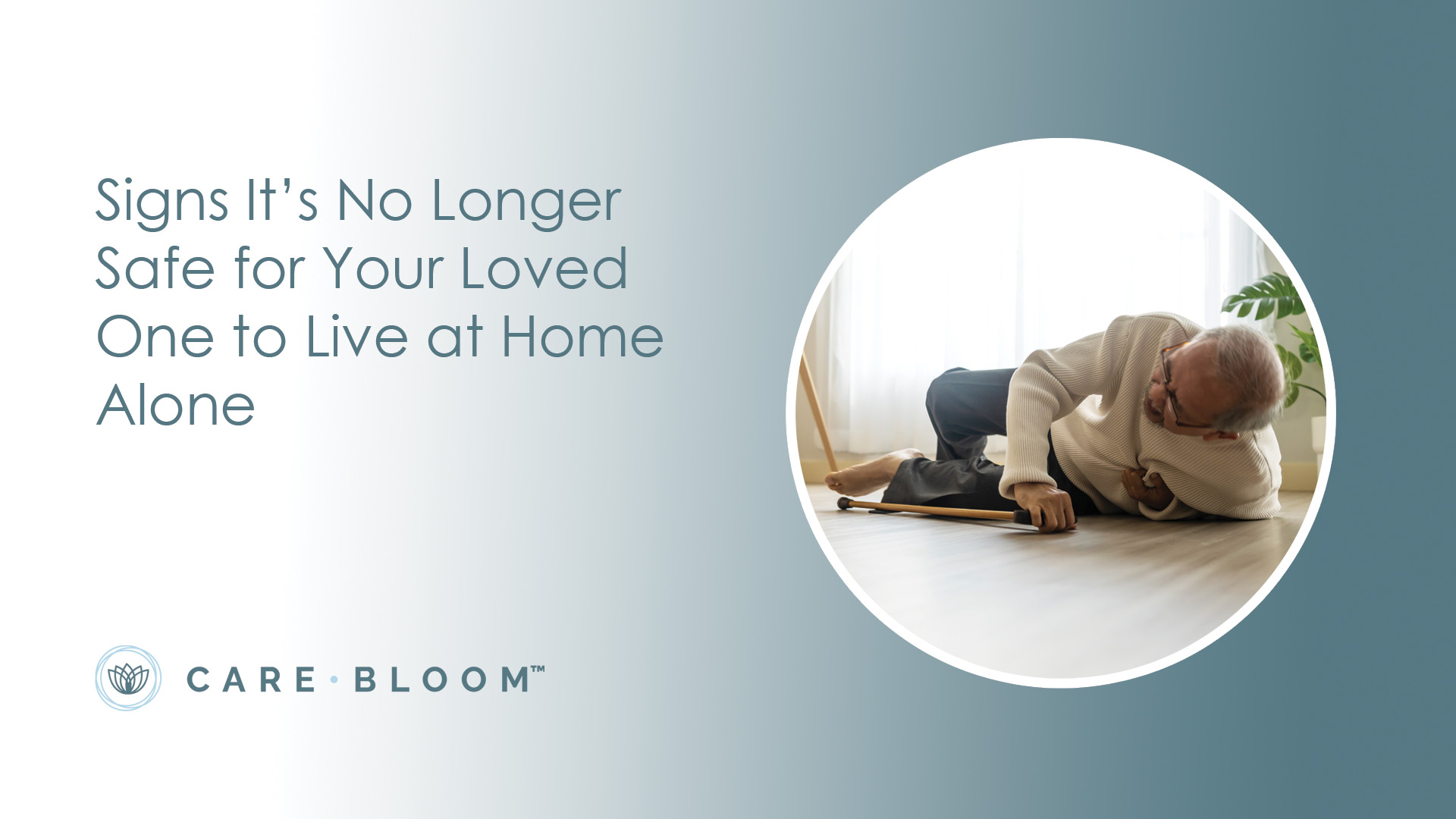Caregiver Blog
Most aging adults wish to remain in the comfort of their own homes for as long as possible. Their home represents independence, familiarity, and a lifetime of memories. Thankfully, with the support of home health aides and technologies like Care Bloom, it’s easier than ever to create a safe environment and facilitate aging in place. However, even with these resources, there may come a time when living at home alone is no longer safe. Recognizing the warning signs early is key to ensuring your loved one receives the appropriate care they need.
Inability to Care for Themselves (ADLs)
Activities of Daily Living (ADLs) such as dressing, bathing, grooming, and toileting are essential for independent living. Having a caregiver help with these activities a couple of times a week is manageable, but if your loved one struggles to get out of bed, brush their teeth, or even dress themselves regularly, it might be time to look into full-time care options. As basic as these tasks seem, when someone can no longer manage them, it can signal that their care needs exceed what can be provided in the home, even with outside help.
Toileting and Incontinence Care
Toileting is one of the most critical issues for seniors living alone. If your loved one is unable to get to the bathroom independently or struggles to manage incontinence care, it can lead to serious health risks such as skin infections or urinary tract infections. The need for consistent toileting assistance often means that living at home alone is no longer safe, and more comprehensive care may be required.
Nutrition and Hydration
Proper nutrition and hydration are crucial for maintaining good health. If your loved one has difficulty preparing meals, remembering to eat, or drinking enough water, they may be at risk for malnutrition or dehydration. When they are unable to feed themselves or consistently remember to eat and drink, whether due to physical limitations or forgetfulness, it’s a clear indication that they need assistance with meal preparation, feeding support, and reminders to ensure they are getting the nutrition and hydration they need.
Difficulty Managing Medications
Medication management is an area where mistakes can have serious consequences. If your loved one is forgetting medication, taking too many, or mixing up their medications, it can lead to dangerous health complications. Medication errors are common in seniors, and if the person is no longer able to manage their prescriptions independently, it’s time to consider a more supportive living arrangement.
Chronic Conditions That Need More Management
Many seniors deal with chronic health conditions like heart disease, diabetes, or arthritis. While these can be managed at home with the right support, there are times when these conditions become more complicated. If chronic conditions require constant monitoring, regular treatments, or specialized care, it may be time for a transition to a care facility.
Unsafe Alone
Certain behaviors can pose an immediate safety risk, and they’re often signs that a senior can no longer live alone. Leaving the stove on, entering dangerous areas like the basement without assistance, or wandering outside in unsafe conditions are all red flags. A loved one who’s unable to recognize or avoid dangerous situations should no longer be trusted to remain unsupervised. Constant vigilance or full-time supervision is likely needed to prevent accidents.
Frequent Falls and Injuries
Nothing is more concerning for seniors than falls. A fall can result in serious injury, especially for those with osteoporosis or frailty. Frequent falls or even the fear of falling can be a sign that your loved one needs more help with mobility and day-to-day activities. Falls can quickly become debilitating, so it’s crucial to evaluate if living at home alone is putting them at unnecessary risk.
Several Trips to the Emergency Room
Multiple emergency room visits in a short period of time should raise red flags. While minor issues are part of aging, repeated visits could indicate that your loved one’s health is deteriorating faster than can be managed at home. Emergency trips, especially for serious or preventable issues, suggest that they may require more care than can be provided in the home.
Caregiver Burnout
Being a caregiver is incredibly hard. After months or even years of providing care, you may reach a point where it’s simply no longer possible to give your loved one the level of care they need. Caregiver burnout is real, and it can be physically, mentally, and emotionally draining. When you’re feeling exhausted, it can affect not only your well-being but also your ability to care for your loved one safely. While you may want to keep your loved one at home as long as possible, your health and ability to care for them are just as important. If you find that you can no longer provide the care they need, or if you need a break to recharge, it might be time to consider assisted living or a nursing home, even if it’s just for respite care.
In Conclusion
Making the decision to move your loved one from their home is never easy. But when safety, health, and well-being are at stake, sometimes it is the best option. The goal is to ensure that your loved one receives the care and attention they need to live with dignity and comfort. Whether it’s transitioning to a full-time care facility or simply increasing the level of help at home, making the right decision will ultimately be the safest and most beneficial for their health and happiness.
